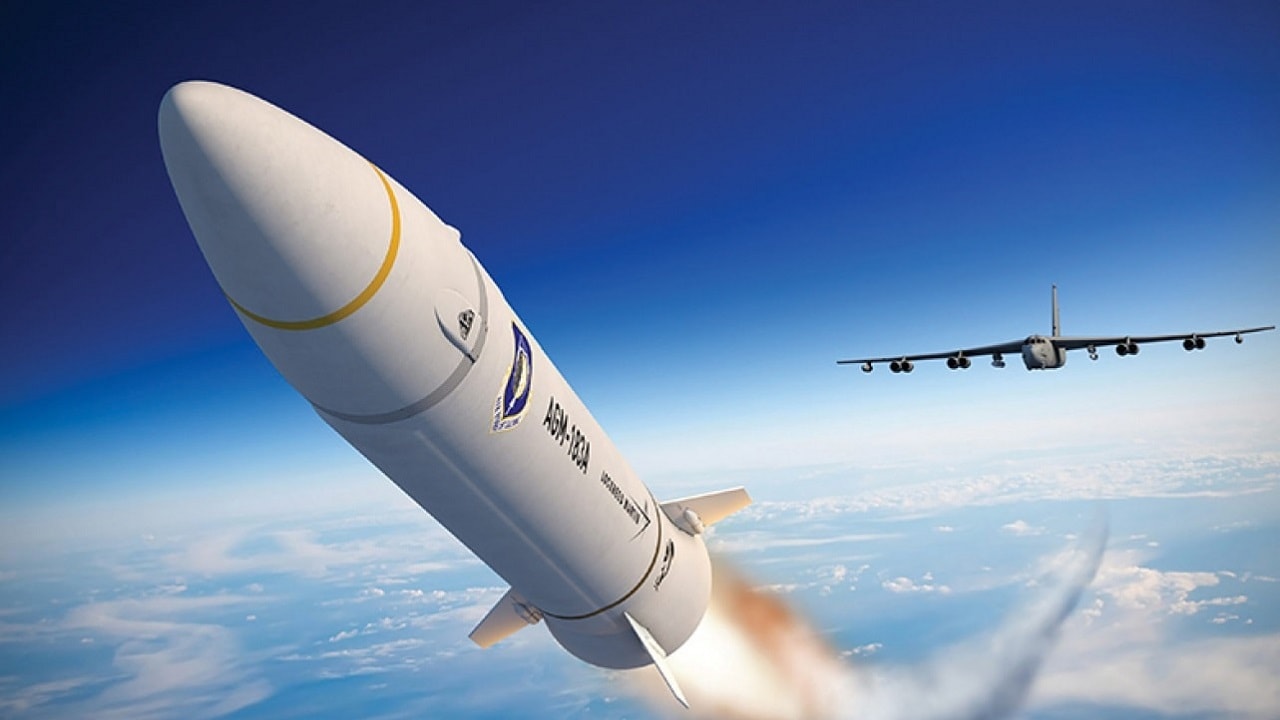The United States Tests a Hypersonic Weapon but Delays Announcement – The latest hypersonic missile test the United States executed was kept under wraps for two weeks to keep from provoking Russia, according to a defense official with knowledge of the program. The Hypersonic Air-breathing Weapon Concept (HAWC) took off last month from a B-52 flying near the west coast in the first successful flight of this particular system made by Lockheed Martin. The Pentagon initially kept quiet about the launch because it did not want to interrupt the news cycle and antagonize the Russians during President Joe Biden’s trip to Europe last month.
What Happened During the Test?
The missile first started with a booster to initially accelerate after leaving the B-52 and then the HAWC released its air-breathing scramjet engine to reach MACH 5 and above. The missile flew up to 65,000 feet and cruised for about 327-seconds for 300 miles. This is a speed of at least 3,300 miles per hour.
Russian Kinzhal Not True Hypersonic
This test came days after Russia claimed to have fired its own hypersonic weapon called the Kh-47M2 Kinzhal. Although experts dispute whether the Kinzhal is a true hypersonic missile or more of a conventional air-launched missile that can go over MACH 5.
Air Force and DARPA Working in Tandem with Defense Contractors
The HAWC is being developed with the Air Force and the Defense Advanced Research Projects Agency (DARPA). DARPA says the missile demonstrates “hydrocarbon scramjet-powered propulsion to enable sustained hypersonic cruise.” DARPA is also working on the Raytheon HAWC missile, which was tested successfully in a free flight last September.
Are American Hypersonics Ready for Prime Time?
“This Lockheed Martin HAWC flight test successfully demonstrated a second design that will allow our warfighters to competitively select the right capabilities to dominate the battlefield,” said Andrew Knoedler, HAWC program manager in DARPA’s tactical technology office, in a DARPA news release. “These achievements increase the level of technical maturity for transitioning HAWC to a service program of record,” Knoedler said.
Scramjet or Boost Glide?
Hypersonics can evade defenses and even destroy targets using kinetic energy without high explosives. Air-breathing scramjet vehicles look to be the technology that the United States will lean on during the arms race of hypersonic weapons development being played out by the Americans, Russians, and Chinese.
The scramjet type of hypersonics is testing better than boost-glide hypersonic weapons at this point. The boost-glide AGM-183A Air-Launched Rapid Response Weapon has not made a successful free flight in several attempts. This hypersonic will also launch underneath a B-52, and it could reach speeds of MACH 20. Boost glide technology is “where a rocket propels its payload to high speeds. The payload is then separated from the rocket before flying as an unpowered glider towards the target,” according to Air Force Technology.
It appears the scramjet technology is doing better than boost-glide at this point. But don’t count the boost-glide effort out. DARPA and the Air Force and various defense contractors are catching up to the Russians and the Chinese in hypersonic warfare and boost-glide can still play an important role to diversify the science and technology behind the effort. The Pentagon is proposing $577 million for hypersonics weapon research in the fiscal 2023 budget. So, hypersonics are a priority for the Air Force and DARPA.
Now serving as 1945’s Defense and National Security Editor, Brent M. Eastwood, PhD, is the author of Humans, Machines, and Data: Future Trends in Warfare. He is an Emerging Threats expert and former U.S. Army Infantry officer. You can follow him on Twitter @BMEastwood.

